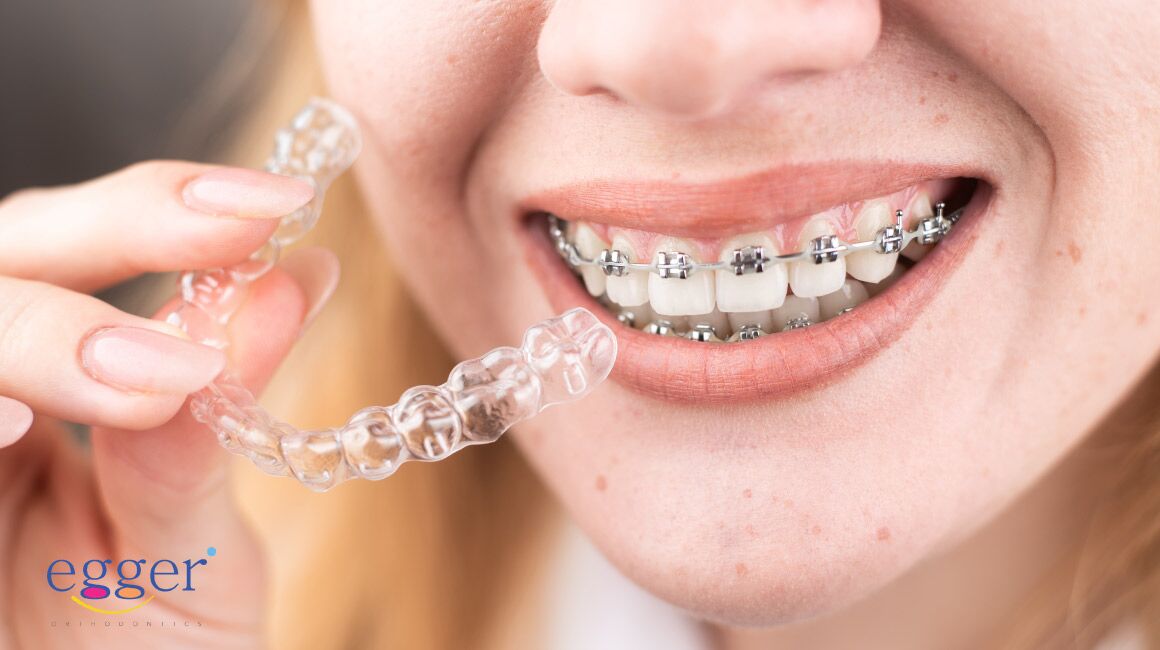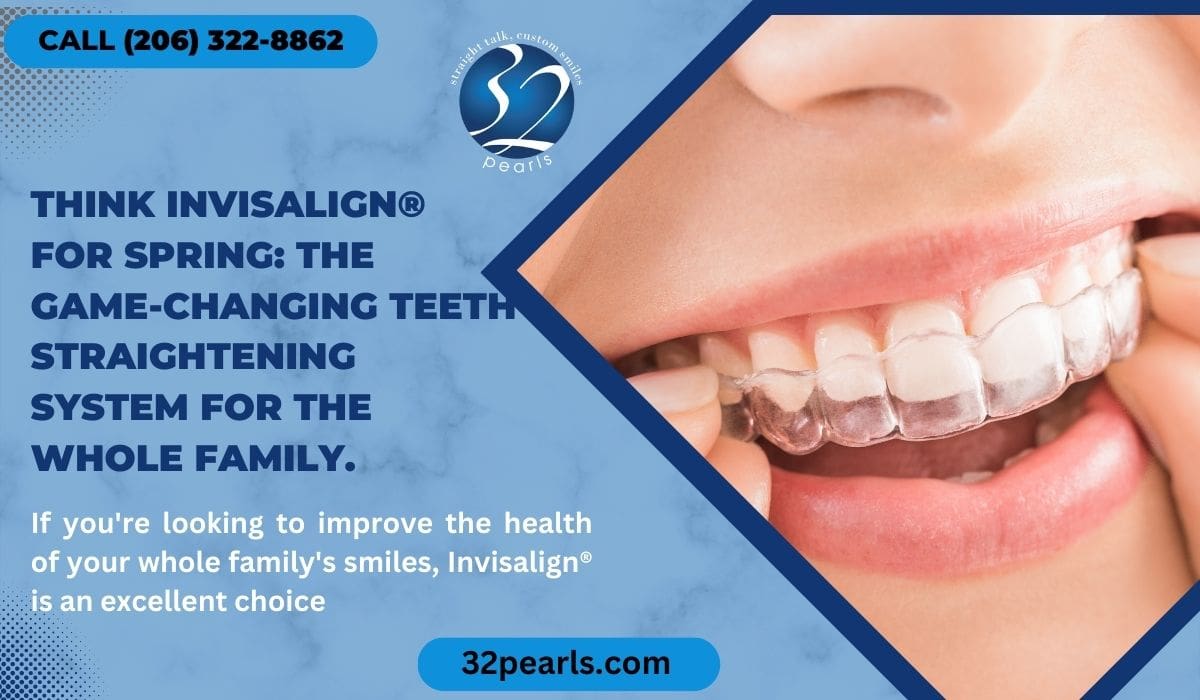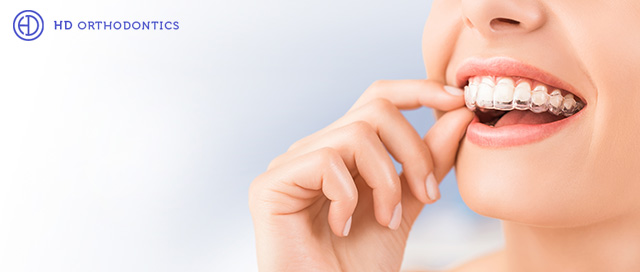Invisalign vs. Typical Braces: Which Option Is Right for You?
When thinking about orthodontic therapy, the selection in between Invisalign and traditional braces provides a number of crucial variables that warrant careful evaluation. Invisalign provides a discreet option with removable aligners, while standard dental braces offer a much more noticeable yet efficient option for serious imbalance. Each choice includes unique benefits and disadvantages connected to visual appeals, comfort, treatment duration, and cost. Understanding these nuances is essential for making an informed decision that aligns with your individual choices and way of living. The inquiry stays: which choice will finest meet your orthodontic needs and assumptions?
Introduction of Treatment Alternatives

On the other hand, typical braces include steel brackets and cables that are adhered to the teeth. This method applies continual pressure with time to accomplish alignment. While effective for intricate orthodontic problems, conventional braces require regular visits for modifications and can posture challenges in preserving dental health as a result of the problem of cleaning around cables and braces.
Both alternatives have their benefits, and the option commonly pivots on details dental conditions, lifestyle preferences, and client compliance. Eventually, consulting an orthodontic professional is essential for figuring out one of the most ideal therapy strategy customized to private requirements. Comprehending the nuances of each choice can dramatically affect the total success of orthodontic treatment.
Aesthetic Considerations
A considerable element influencing the choice between Invisalign and traditional braces is the aesthetic appeal each therapy supplies. Invisalign aligners are crafted from clear plastic, making them essentially undetectable when put on. This discreet look is specifically attracting teenagers and grownups that may feel awkward concerning their orthodontic treatment. The ability to keep an all-natural smile throughout the positioning process can significantly boost the person's confidence in social and professional setups.
In comparison, traditional dental braces contain steel brackets and cords, which can be much more recognizable. While improvements in orthodontic technology have actually led to the growth of smaller braces and colored elastics, standard braces still keep a more obvious profile. For some people, the visibility of dental braces may discourage them from looking for needed treatment.
Eventually, the selection between Invisalign and traditional dental braces might rest on personal choices regarding aesthetics. Individuals that prioritize discretion usually lean toward Invisalign, while those that are much less worried about exposure may choose standard braces. Understanding the visual effects of each option is vital for making an informed decision that straightens with one's lifestyle and preferences.
Comfort and Convenience

In regards to ease, Invisalign aligners are detachable, allowing patients to appreciate their preferred foods without limitation and maintain optimum dental hygiene. Brushing and flossing are streamlined, as the aligners can be gotten during these regimens, whereas standard braces require mindful navigating around brackets and cords.
In addition, Invisalign's dynamic system enables less orthodontic sees. Clients generally obtain several sets of aligners at the same time, which can enhance the treatment procedure and lower time spent in the orthodontist's chair. On the other hand, standard braces demand regular changes, Website making them less hassle-free for those with hectic timetables. Invisalign. In general, the convenience and benefit of Invisalign make it an appealing option for many individuals looking for orthodontic treatment.
Treatment Duration and Performance
While both Invisalign and traditional braces work in correcting dental imbalances, the period of treatment can vary dramatically between both choices. Usually, Invisalign treatment can take anywhere from 12 to 18 months, depending upon the complexity of the instance. The clear aligners function by gradually shifting teeth into their preferred settings, and normal follow-ups with an orthodontist aid ensure progress stays on the right track.
On the other hand, typical dental braces often require a longer commitment, typically ranging from 18 months to three years. This results from their set nature and using brackets and cords, which can be more efficient for serious imbalances and complicated situations (Invisalign). The treatment effectiveness of conventional braces is well-documented, as they enable for accurate modifications and higher control over tooth motion
Inevitably, the selection in between Invisalign and typical dental braces might rest on both the anticipated treatment duration and the particular dental problems available. Consulting with an over at this website orthodontist is crucial, as they can offer tailored recommendations based on specific requirements, making certain the picked technique aligns with desired timeframes and outcomes.
Cost Contrast and Insurance Alternatives
Price plays a considerable role in the decision-making procedure for individuals considering orthodontic therapy, whether selecting Invisalign or traditional dental braces. Usually, the expense of Invisalign ranges from $3,000 to $8,000, while traditional dental braces normally cost in between $2,000 and $6,000. Aspects influencing these expenses consist of the complexity of the instance, the duration of therapy, and geographical place.
Lots of oral insurance strategies give partial coverage for orthodontic treatments, however the specifics can differ widely. Typically, standard dental braces might be more often covered by insurance coverage strategies contrasted to Invisalign, which some insurance providers categorize as a cosmetic treatment.
Additionally, a number of orthodontic methods supply adaptable payment plans, making both treatment choices a lot more obtainable. Patients should inquire about potential financing choices and discount rates for in advance repayments. Examining the complete price, consisting of insurance policy advantages and layaway plan, is necessary for making an educated choice that straightens with both visual preferences and budget plan considerations.

Conclusion
In summary, the choice between Invisalign and conventional dental braces depends upon numerous variables, consisting of visual preferences, comfort, treatment duration, and price. Invisalign supplies a very discreet, detachable choice that helps with oral hygiene and nutritional adaptability, while traditional braces may be much more suitable for complex oral problems and typically come at a reduced rate point. Eventually, assessment with an orthodontist is vital to assess specific scenarios and identify the most ideal treatment option for attaining ideal dental placement.
When thinking about orthodontic treatment, the option between Invisalign and typical braces offers a number of important factors that warrant careful analysis.Comparing Invisalign and traditional dental braces reveals distinctive treatment alternatives for orthodontic adjustment.While both Invisalign and standard dental braces are effective in remedying dental misalignments, web the period of treatment can differ substantially between the two alternatives.Expense plays a significant function in the decision-making procedure for individuals considering orthodontic treatment, whether choosing for Invisalign or conventional dental braces.In summary, the option in between Invisalign and traditional braces pivots on numerous elements, consisting of visual preferences, convenience, therapy duration, and expense.
Comments on “Keeping Oral Health While Making Use Of Invisalign: Tips for a Smooth Experience”